Achilles Heel Care for Mobility, Strength, and Stability
You need to know that Achilles heel discomfort can affect every step you take, making simple movements like walking, standing, or rising from a chair challenging and frustrating. The Achilles tendon is vital for your leg strength and stability, and when it becomes strained or weakened, it can cause discomfort, stiffness, and difficulty with daily activities.
The Achilles tendon plays a crucial role in lower limb movement, supporting activities such as walking, running, and postural coordination. Mobility concerns involving the Achilles tendon may develop due to repetitive strain, postural adaptations, or biomechanical influences. While surgical interventions are considered in severe cases, research highlights the effectiveness of structured, non-invasive approaches in maintaining tendon function and supporting movement efficiency.
Achilles tendon mobility adaptations, including tendinopathy and bursitis, may contribute to postural imbalances affecting the knees, hips, and spine. Research suggests that targeted chiropractic and physiotherapy-based strategies can assist in optimizing Achilles function while minimizing soft tissue stress. Techniques such as neuromuscular rehabilitation, movement coordination, and structured flexibility programs may help individuals maintain long-term lower limb function without requiring invasive interventions.
Additionally, Achilles-related mobility concerns are often linked to plantar fascia sensitivity and bone spur formation, reinforcing the need for comprehensive movement-based care. Research supports a multi-modal approach that integrates chiropractic-assisted mobility support, physiotherapy-based soft tissue coordination, and modern rehabilitation techniques. Early intervention and structured rehabilitation may assist in preserving tendon elasticity, reducing excessive strain, and supporting lower limb postural alignment.
This article emphasizes the importance of non-surgical Achilles tendon support strategies. By integrating research-supported movement-based approaches, individuals can pursue structured, non-invasive rehabilitation methods to optimize tendon function, maintain flexibility, and prevent long-term mobility challenges. A well-structured, targeted approach ensures optimal recovery and sustained lower limb performance.
At the Chiropractic Specialty Center®, our team of chiropractors and physiotherapists focuses on assessing the root cause of your discomfort and addressing it with precise, evidence-based care. Our approach emphasizes restoring tendon health, strengthening surrounding muscles, and supporting long‑term movement and stability. By focusing on tailored exercises, manual therapy, and non‑invasive treatments, we help patients regain confidence in every step they take. Our priority is making sure you understand your condition clearly, so you can make the best choices for long‑term leg and foot health.
KEY TAKEAWAYS: 3 Things You Need to Know Now
Achilles discomfort affects movement. Even mild discomfort can impact daily activities like walking, standing, or rising from a chair. Getting a thorough assessment early can prevent long‑term strain.
Proper care restores strength and stability. Targeted physiotherapy, chiropractic care, and tailored exercises can help regain tendon strength, balance, and mobility.
Early attention leads to better recovery. Seeking care promptly can reduce discomfort, support tendon health, and help you regain a confident stride.
Contact Us Today for Tailored Achilles Heel Care
If discomfort or restriction in your Achilles heel is affecting your daily routine, now is the right time to seek a thorough assessment and an individualized approach to recovery. At the Chiropractic Specialty Center®, we integrate advanced physiotherapy, chiropractic care, and rehabilitation exercises, focusing exclusively on the mechanics of the ankle, foot, and leg. Our expert team uses precise, measured methods to help restore range of motion, build strength, and support long‑term joint and tendon health. Don’t wait until your Achilles heel affects every step you take. Contact us today to book your consultation and discover how our clinical experience and patient-focused approach can guide you towards stable, confident steps and long‑term leg health.
Holistic Achilles Tendon Care for Optimal Recovery
At Chiropractic Specialty Center® (CSC), our non-invasive rehabilitation strategies for Achilles tendon function support integrate chiropractic and physiotherapy-assisted movement techniques. These structured care approaches assist in maintaining Achilles tendon mobility and function without requiring injections or surgical procedures.
Understanding Achilles Tendon Function and Common Causes of Adaptations
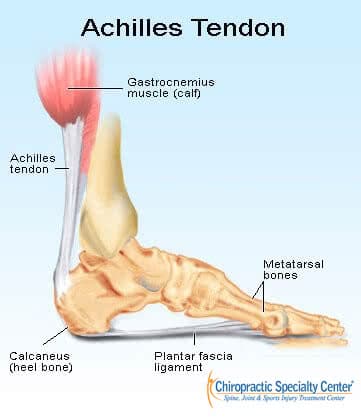
The Achilles tendon is a strong, fibrous structure that connects the calf muscles to the heel bone (calcaneus). It plays a crucial role in walking, running, and lower limb movement efficiency.
Factors That May Influence Achilles Tendon Function:
✔ Repetitive motion-related influences (e.g., running, trekking, or uphill walking).
✔ Postural and gait adaptations influencing tendon loading patterns.
✔ Long-term movement patterns contributing to soft tissue sensitivity.
✔ Use of worn-out footwear affecting structural alignment.
Neglecting Achilles tendon mobility concerns may contribute to postural adjustments affecting foot mechanics, knee function, and lower limb movement efficiency.
The Relationship Between Achilles Tendon Function and Plantar Fasciitis
Plantar fasciitis is frequently observed in individuals with Achilles tendon mobility adaptations.
✔ Achilles-related tension influences movement at the back of the heel.
✔ Plantar fasciitis-related sensitivity occurs at the underside of the heel.
Since both conditions involve tendon function, accurate assessment and structured movement strategies are essential in maintaining foot mechanics and lower limb function.
Bone Spurs and Achilles Tendon Mobility
Bone spurs may develop in response to long-standing postural adaptations.
✔ Heel spurs positioned at the bottom of the calcaneus may relate to chronic plantar fascia sensitivity.
✔ Bone spurs at the back of the heel may arise from Achilles tendon mobility concerns.
Addressing both the Achilles tendon and any existing bone spurs may assist in supporting long-term lower limb movement efficiency.
Understanding Achilles Tendon Mobility Changes
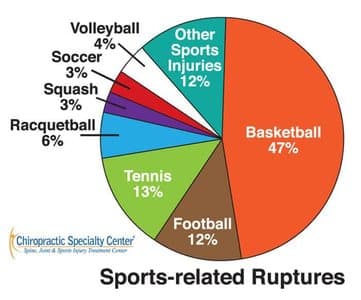
The term “Achilles tendon adaptations” may refer to:
✔ Achilles tendon mobility challenges related to soft tissue imbalances.
✔ Tendon sensitivity influencing lower limb function.
Key Considerations for Achilles Tendon Function Support:
✔ Individuals engaging in high-impact activities may experience increased stress on the Achilles tendon.
✔ Basketball, tennis, football, rugby, and badminton players may be at a higher risk of experiencing Achilles tendon mobility challenges.
✔ Prompt movement-based interventions may assist in maintaining Achilles tendon flexibility and function.
Structured Non-Surgical Achilles Tendon Support Strategies
At CSC, our targeted movement-based strategies integrate:
✔ Chiropractic-assisted movement coordination for Achilles function optimization.
✔ Physiotherapy-based rehabilitation for lower limb postural support.
✔ Progressive recovery techniques focusing on neuromuscular function.
For individuals seeking structured non-invasive support for Achilles tendon mobility, contact CSC Malaysia to explore targeted rehabilitation solutions.
Achilles Tendon Function and Non-Invasive Care Approaches
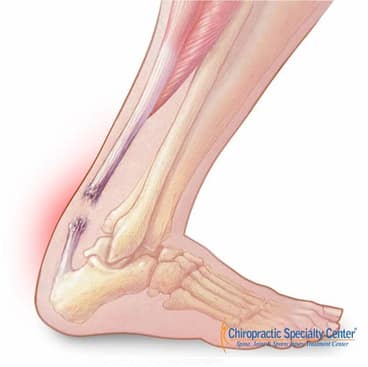
The Achilles tendon is a strong fibrous structure that connects the calf muscles (gastrocnemius and soleus) to the heel bone (calcaneus). It plays a vital role in walking, running, and lower limb movement coordination.
Maintaining Achilles tendon function is essential for lower limb mechanics. Long-term Achilles tendon mobility concerns may influence postural alignment and movement efficiency, potentially affecting the knees, hips, low back, sciatica & spondylolisthesis, and spine.
Understanding Achilles Tendon Adaptations (Tendinopathy)
Tendinopathy refers to structural changes within the tendon, often resulting from repetitive strain or movement-based influences.
✔ Repetitive loading patterns may contribute to tendon structure adaptations.
✔ Missteps or minor injuries may influence Achilles tendon mobility.
✔ Long-term movement adaptations may contribute to soft tissue tension.
Structured movement-based rehabilitation strategies may assist in maintaining Achilles tendon function while supporting lower limb postural efficiency.
Achilles Tendon Function and Plantar Fasciitis
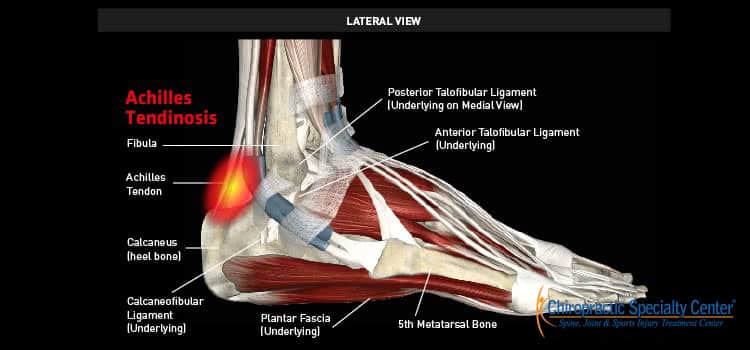
Plantar fasciitis may co-exist with Achilles tendon mobility concerns, as both conditions involve soft tissue function at the heel.
✔ Achilles-related mobility influences movement at the back of the heel.
✔ Plantar fascia-related tension affects the bottom of the heel.
Since both involve soft tissue structures, precise assessment and targeted movement-based strategies are essential for foot mechanics support.
Bone Spur Formation at the Heel and Achilles Tendon Function
✔ Heel spurs positioned at the underside of the calcaneus may relate to plantar fascia adaptations.
✔ Bone spurs at the back of the heel may result from Achilles tendon function changes.
Structured non-invasive mobility techniques may assist in maintaining Achilles tendon function and soft tissue alignment.
Achilles Tendon Function and Bursitis (Tendocalcaneal Bursitis)
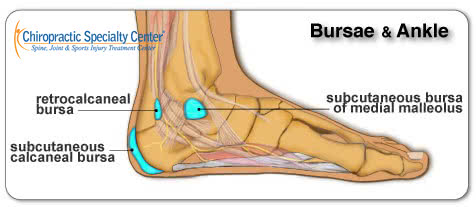
A bursa is a fluid-filled sac positioned between muscles and tendons, allowing smooth movement.
✔ Tendocalcaneal bursitis refers to inflammation at the Achilles tendon bursa.
✔ Irritated bursae may contribute to soft tissue sensitivity and movement adaptations.
Targeted non-invasive movement strategies may assist in supporting Achilles function while addressing bursa-related mobility influences.
Structured Non-Surgical Achilles Tendon Support Strategies
At Chiropractic Specialty Center® (CSC), our movement-based strategies integrate:
✔ Chiropractic-assisted mobility techniques for postural function.
✔ Physiotherapy-based soft tissue strategies for Achilles flexibility.
✔ Targeted rehabilitation approaches for lower limb coordination.
Our non-invasive movement-based techniques assist in maintaining mobility, soft tissue flexibility, and neuromuscular coordination.
For individuals seeking structured Achilles tendon mobility support, contact CSC Malaysia to explore targeted movement-based rehabilitation approaches.
Author:
Yama Zafer, D.C., with an educational background in physiotherapy and chiropractic from Cleveland Chiropractic University in Kansas City and nearly three decades of clinical experience, read more about Y. Zafer on his official bio page.
Peer-Reviewed Medical References:
Alfredson H, Pietilä T, Lorentzon R. Heavy‑load eccentric calf muscle training for the treatment of chronic Achilles tendinosis. Am J Sports Med. 1998;26(3):360–6.
Magnussen RA, Dunn WR, Thomson AB. Nonoperative treatment of midportion Achilles tendinopathy: a systematic review. Am J Sports Med. 2009;37(9):1856–66.
Maffulli N, Longo UG, Denaro V. Novel approaches for the management of tendinopathy. J Bone Joint Surg Am. 2010;92(15):2604–13.
Paavola M, Kannus P, Järvinen TA, Järvinen M. Achilles tendinopathy. J Bone Joint Surg Am. 2002;84(11):2062–76.
Kader D, Saxena A, Movin T, Maffulli N. Achilles tendinopathy: some aspects of basic science and clinical management. Br J Sports Med. 2002;36(4):239–49.
Maffulli N, Walser M. Tendinopathy: a review of the clinical and experimental literature. Clin Sports Med. 2008;27(4):667–81.
van Dijk CN, Lim JH, Reijman M, Marti RK. Insertional Achilles tendinitis: excision of the plantaris tendon combined with calcaneoplasty for treatment. J Bone Joint Surg Br. 2011;93(3):343–9.
Last Updated:
Last updated 20 June 2025: Achilles Heel Care for Mobility, Strength, and Stability.
